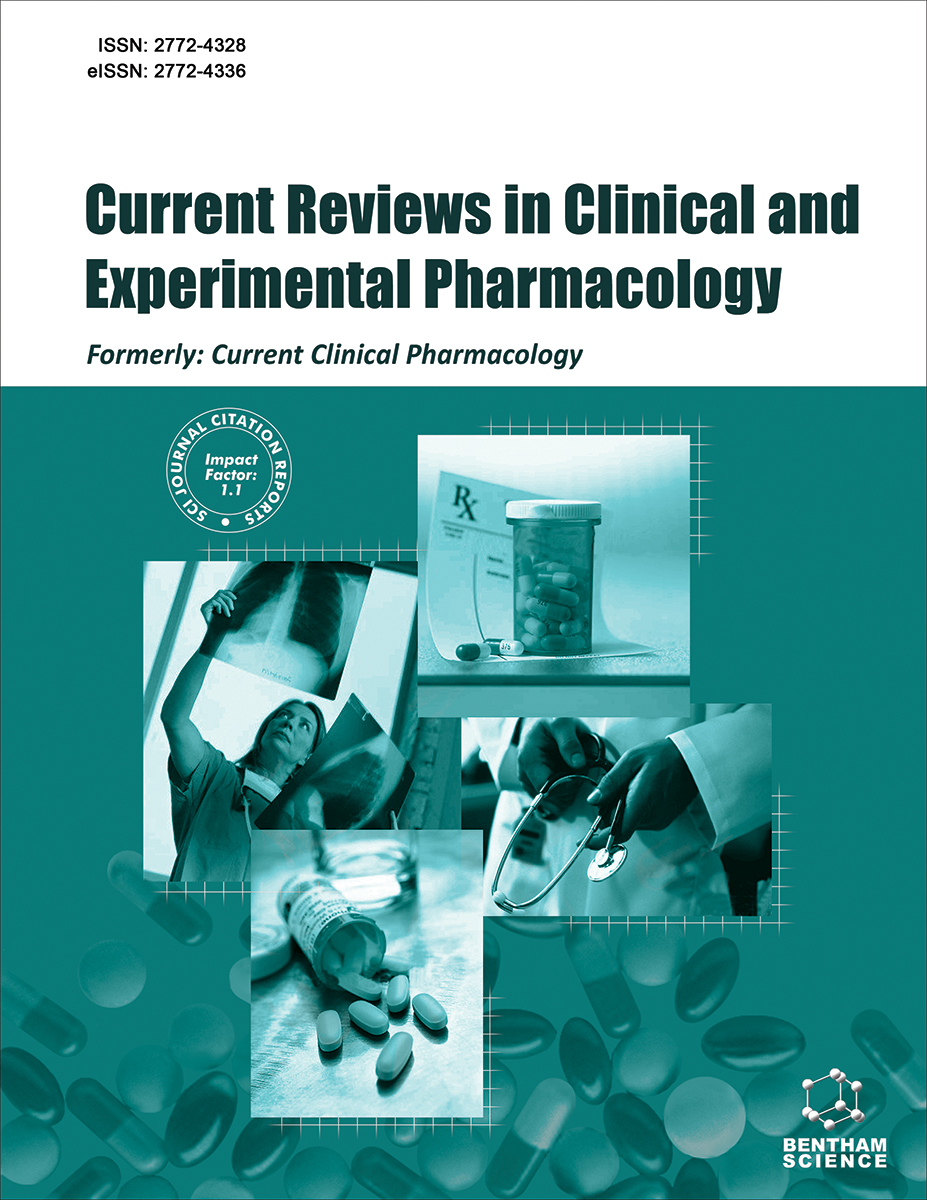- Home
- A-Z Publications
- Current Reviews in Clinical and Experimental Pharmacology
- Previous Issues
- Volume 18, Issue 2, 2023
Current Reviews in Clinical and Experimental Pharmacology - Volume 18, Issue 2, 2023
Volume 18, Issue 2, 2023
-
-
Using Psychedelics in Clinical Practice: Comparing Therapeutic Uses and Potential Harms
More LessBy Rabeet TariqPsychedelics might be the oldest psychoactive agents known to be used for inducing religious or mystical experiences. Their strong psychoactive effect was discovered accidentally in 1943 after the synthesis of Lysergic acid diethylamide (LSD) in 1937. These drugs became a mainstream area of research following the synthesis of LSD; however, several political and social factors led to their ban in 1966, after which research on Read More
-
-
-
Role of Cytokines in Chemotherapy-related Cognitive Impairment of Breast Cancer Patients: A Systematic Review
More LessAuthors: Kanika Tyagi, Md. Masoom, Haya Majid, Aakriti Garg, Dinesh Bhurani, Nidhi B. Agarwal and Mohd. A. KhanBackground: Cognitive impairment is one of the most common problems experienced by patients receiving chemotherapy, and evidence suggests that cytokines might play an important role. Various studies were conducted to evaluate the role of cytokines in chemotherapy-related cognitive impairment (CRCI). However, the association between CRCI due to cytokines is not well-established. Thus, this systematic review aims to Read More
-
-
-
A Systematic Review of Randomized Clinical Trials on the Efficacy and Safety of Pitavastatin
More LessBackground: A subpopulation of statin users such as subjects with chronic kidney disease (CKD), Human Immune virus (HIV), acute coronary syndrome (ACS), revascularization, metabolic syndrome, and/or diabetes may particularly benefit from pitavastatin pharmacotherapy. Aim: The current systematic review aimed systematically to evaluate the effect of pitavastatin on primary cardiac events in subjects receiving pit Read More
-
-
-
Prevalence of Anemia among Chronic Myeloid Leukemia Patients Treated with Imatinib: A Evidence-based Meta-analysis
More LessAuthors: Avinash K. Singh, Anoop Kumar, Narendra Agrawal, Dinesh Bhurani, Rayaz Ahmed and Manju SharmaBackground: Imatinib is one of the tyrosine kinase inhibitors used for the treatment of chronic myeloid leukemia (CML) patients. The exact association of imatinib with anemia in CML patients is still unclear. Aim: The current study aimed to find the prevalence of anemia in chronic myeloid leukemia patients treated with imatinib. Methods: The relevant articles were searched in PubMed, Google scholar, and Clinical tr Read More
-
-
-
Proton Pump Inhibitors’ Use and Risk of Iron Deficiency Anaemia: A Systematic Review and Meta-analysis
More LessAim: Various research was conducted during the last decade, with inconsistent findings regarding iron death anaemia (IDA) perils vis-à-vis utilization of proton-pump inhibitors (PPIs). Consequently, recent systematic review and meta-analysis were implemented to evaluate IDA-related perils concerning the utilization of proton-pump inhibitors. Methods: The databases of EBSCOhost, PubMed® and Cochrane Central were sear Read More
-
-
-
Standard Triple Therapy as a Remedy for Treatment of Helicobacter pylori Infection: A Systematic Review and Meta-analysis of Randomized Clinical Trials
More LessBackground: H. pylori infection, one of the most prevalent infectious diseases, can cause severe health problems. Therefore, it seems to be crucial to effectively counter the H. pylori infection with a well-tolerated eradication regimen. However, since the discovery of H. pylori, the optimal treatment for this disease is still unclear and remains controversial. Objectives: The present study aims to estimate the efficacy of stand Read More
-
-
-
Investigating Neuroprotective Potential of Berberine, Levetiracetam and their Combination in the Management of Alzheimer’s Disease Utilizing Drug Repurposing Strategy
More LessAuthors: Anuradha Singh, Suneela Dhaneshwar and Avijit MazumderAim: The aim of the present work was to evaluate the neuroprotective potential of berberine, levetiracetam and their combination in lead acetate-induced neurotoxicity by applying a drug repositioning approach. Background: Alzheimer's disease (AD) is a neurodegenerative disease characterized by impairment of memory, disturbances in reasoning, planning, language and perception. Currently, there are only four d Read More
-
Most Read This Month
Article
content/journals/crcep
Journal
10
5
false
en


